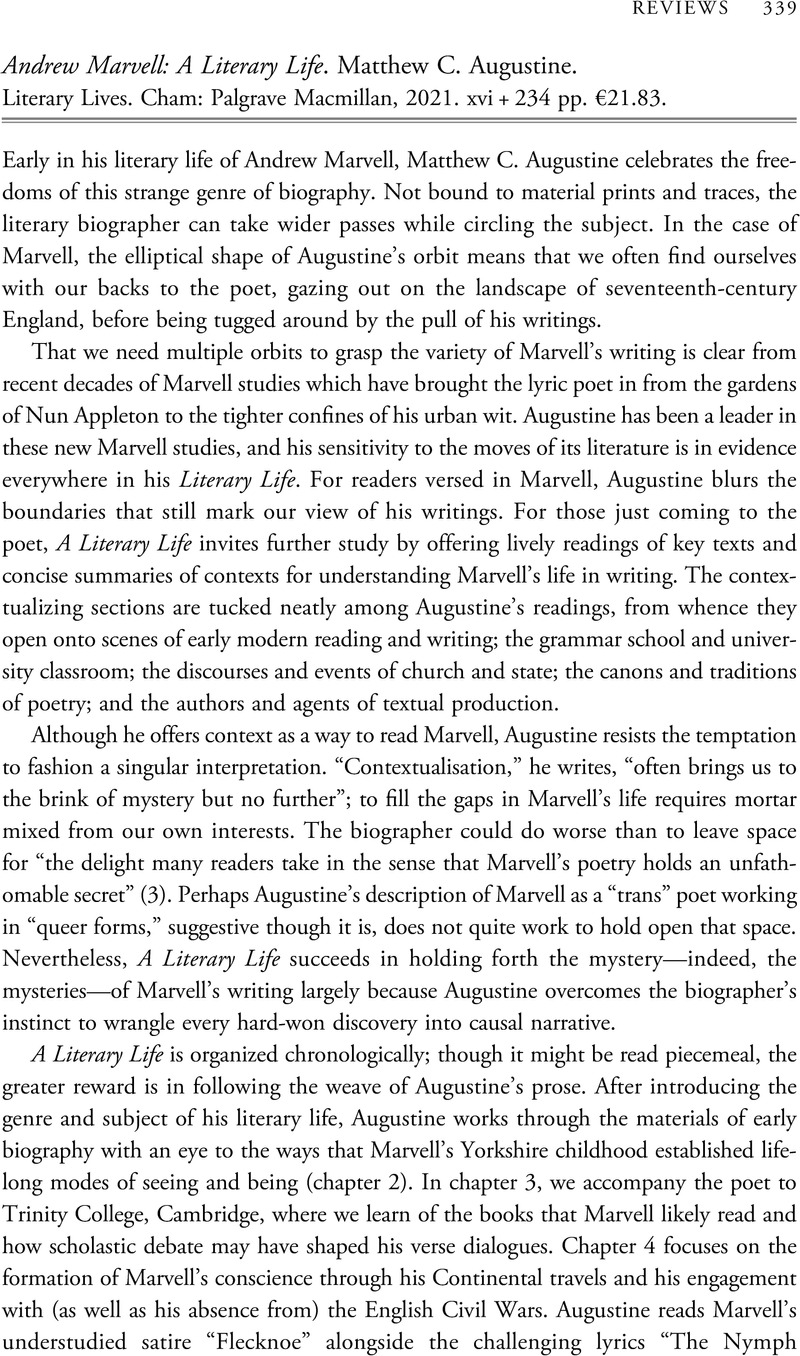No CrossRef data available.
Article contents
Andrew Marvell: A Literary Life. Matthew C. Augustine. Literary Lives. Cham: Palgrave Macmillan, 2021. xvi + 234 pp. €21.83.
Review products
Andrew Marvell: A Literary Life. Matthew C. Augustine. Literary Lives. Cham: Palgrave Macmillan, 2021. xvi + 234 pp. €21.83.
Published online by Cambridge University Press: 17 April 2023
Abstract
An abstract is not available for this content so a preview has been provided. Please use the Get access link above for information on how to access this content.

- Type
- Review
- Information
- Copyright
- Copyright © The Author(s), 2023. Published by the Renaissance Society of America



